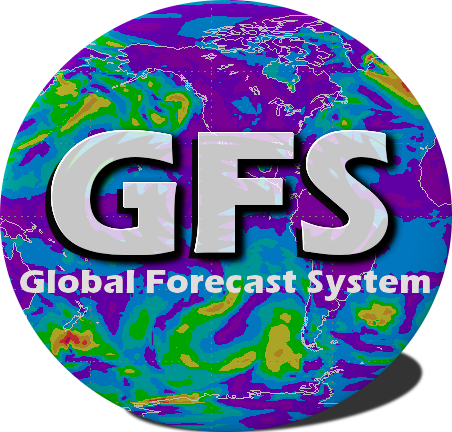Significant Improvement Ahead for Weather and Climate Forecast Accuracy
Date Posted: July 20, 2012
 The National Centers for Environmental Prediction – a division of NOAA’s National Weather Service – recently upgraded the operational Global Forecast System, which is run four times per day and produces forecasts up to 16 days in advance. The GFS is the backbone of the National Weather Service’s global weather and climate forecasting capability.
The National Centers for Environmental Prediction – a division of NOAA’s National Weather Service – recently upgraded the operational Global Forecast System, which is run four times per day and produces forecasts up to 16 days in advance. The GFS is the backbone of the National Weather Service’s global weather and climate forecasting capability.The upgrade provided a new method for assimilating the billions of pieces of atmospheric data collected daily from Earth observations and satellites. These data are used to describe the current state of the atmosphere, the important first step to running any weather forecast model.
Even with billions of observations, gaps in our depiction of the current atmosphere can lead to forecast errors. The new data assimilation technique uses ensembles, or collections of forecasts, to do a better job than the older system at filling those gaps.
During extensive preoperational testing, the new system produced more accurate forecasts out to 16 days. It also improved hurricane track forecast accuracy, general global weather predictions, and forecasts of stratospheric ozone, which affects the amount of skin‐damaging radiation that hits Earth’s surface and also affects climate.
“This data assimilation upgrade represents one of the biggest improvements in U.S. weather and climate forecasting in a decade,” said Louis Uccellini, Ph.D., director of NCEP. “In the near future, we’re going to start noticing more accurate forecasts 16 days in advance. This new ensemble system is a major advancement in numerical weather prediction and will significantly improve our use of atmospheric observations to correct errors in our forecast models.”
The new hybrid system is the result of an intensive, three‐year collaboration between scientists at NCEP, the NOAA Earth System Research Laboratory (ESRL), NASA and the University of Oklahoma. Further system improvements will be developed over the next few years through continued collaboration between NCEP and ESRL, the University of Maryland and the University of Oklahoma.
Comparison of 5 day forecast anomaly correlation at 500mb (higher = better) between forecasts from previous analysis system (black) and new hybrid analysis system (red) for period from August – October 2010.
To learn more about the Global Forecast System, click here.
